Baby Panda's Emergency Tips - Rescue & care of animals
Save the day with Baby Panda's life-saving tips for emergencies.

- 9.86.00.00 Version
- 4.6 Score
- 27M+ Downloads
- In-game purchases License
- 3+ Content Rating
Introducing Baby Panda's Emergency Tips
Youngsters! Are you familiar with how to stay safe and protect yourself during risky situations? Immerse yourself in this doctor simulation game now! Accompany the adorable Baby Panda as you administer initial aid to individuals in need and learn a total of 27 crucial safety and first aid insights!
SPRAINED ANKLE
If someone twists their ankle while escaping an earthquake, lend a hand! Apply an ice pack to minimize swelling, wrap the area with a bandage, and raise the foot using a blanket. First aid—successfully completed!
SCORCHED IN A BLAZE
In case of a fire outbreak, swiftly guide people to safety! If they suffer burns, provide immediate first aid by rinsing the burn with cool water, removing clothing near the injury to prevent infection, and seeking medical care at a hospital promptly!
ANIMAL BITE
What steps should you take if a pet bites you? Wash the wound with soapy water, apply antiseptic solution using a cotton swab for sterilization, and seek medical treatment at a hospital!
ELECTRICITY SHOCK
Should someone collapse following an electric shock, swift cardiopulmonary resuscitation (CPR) is crucial! Begin with 30 chest compressions, clear any blockages from their mouth, and perform two rescue breaths. Continue this cycle until the individual regains consciousness.
Apart from these scenarios, this doctor simulation game imparts further safety and first aid wisdom for instances like heatstroke, factory explosion, and falling into a well. Acquiring first aid skills will not only advance your capability to assist yourself but also bolster your awareness of safety guidelines. Hop on board and start learning, kids!
FEATURES INCLUDE:
-Engaging simulations to instruct children on self-rescue methods;
-27 first aid tips that can assist kids in managing burns, scalds, and more;
-Cards with first aid knowledge to fortify youngsters' awareness of self-rescue techniques;
-Straightforward and kid-friendly first aid instructions;
-Ability to play offline at any location.
About BabyBus
At BabyBus, we are devoted to nurturing children's inventiveness, imagination, and inquisitiveness, crafting our merchandise from the viewpoint of children to help them discover the world autonomously.
Currently, BabyBus offers a vast array of products, videos, and educational content for over 600 million worldwide fans aged 0-8! The brand has launched over 200 apps for children, more than 2500 nursery rhymes and animations, and in excess of 9000 stories covering various themes in Health, Language, Society, Science, Art, and other domains.
Contact us: ser@babybus.com
Why Teaching Kids About Emergency Preparedness Matters
In our unpredictable world, teaching kids about emergency preparedness is more than a good idea; it’s a vital life skill. As parents, guardians, or caregivers, we naturally want to protect our children from life’s uncertainties. But let’s face it, emergencies can happen without warning, and preparation can be a lifesaver.
Empowering Through Knowledge
One of the key reasons to educate kids about emergency preparedness is to arm them with the knowledge and skills they need to stay safe. Whether it’s natural disasters like earthquakes and floods or unexpected accidents, understanding potential hazards helps children respond effectively. It’s not about scaring them; it’s about preparing them.
Reducing Fear, Building Confidence
Knowledge is power, and that’s especially true when it comes to emergencies. When children know what to expect and how to react, they feel more in control. This understanding can ease their fears and boost their confidence, helping them react calmly and wisely.
Fostering Responsibility and Community
Teaching emergency preparedness isn’t just about individual safety; it’s about building a sense of responsibility and community. Involving kids in planning, assembling kits, and practicing drills teaches them the value of foresight and cooperation. They learn that they’re part of a larger community, and their actions can make a difference.
A Lifelong Skill
In the end, teaching kids about emergency preparedness is about more than immediate safety. It’s about nurturing emotional well-being, fostering responsibility, and building resilience. These are skills that will serve them well throughout their lives.
As we guide our children through the complexities of emergency preparedness, we’re not just teaching them how to respond to a crisis. We’re instilling values, building character, and empowering them to face life’s challenges with courage and compassion. It’s a lesson in living, and it’s one of the most important gifts we can give.
Age-Appropriate Ways to Introduce the Concept of Emergencies to Kids
Teaching kids about emergency preparedness is a delicate task. It’s like walking a tightrope – you want to inform them without frightening them. Here’s how to balance that act, tailored to different age groups:
Young Explorers (Ages 3-6)
Start with the basics. Use colorful stories, engaging videos, or playful role-playing games to explain simple safety rules. What should they do if there’s a fire? How can they call for help? Keep it light and focus on following instructions from trusted adults. Remember, at this age, safety can be a fun adventure!
Curious Minds (Ages 7-12)
Now, you can dig a little deeper. Share age-appropriate books or interactive materials about natural disasters, accidents, or even getting lost. Encourage questions and honest conversations. Make them part of the family emergency plan, letting them help design escape routes and choose meeting points. It’s about learning and empowerment.
Teen Trailblazers (Ages 13-18)
Time to level up. Discuss complex scenarios like severe weather or power outages. Teach practical skills like using emergency supplies or performing basic first aid. Encourage them to join community preparedness initiatives or volunteer opportunities. It’s about building responsibility and community awareness.
A Gentle Approach
No matter the age, the key is to adapt the information to their understanding level. You’re not just teaching facts; you’re nurturing confidence and resilience. By introducing emergencies in age-appropriate ways, you’re giving them tools, not fears.
To go further you can explore FEMA’s Ready kids guides that provides tools and useful information.
Creating a Family Emergency Plan with Your Children
We have previously provided a comprehensive guide to help you with creating a family emergency plan. However, this section takes a different approach by specifically focusing on the active involvement of children in the planning process.
Creating a family emergency plan isn’t just a task on a to-do list; it’s a living, breathing guide to keeping your loved ones safe. It’s about empowerment, understanding, and preparation. Here’s how to make it a family affair:
1. Discuss Potential Emergencies: Start with a family conversation. What could happen in your area? Earthquakes, hurricanes, floods, fires, or medical emergencies? It’s not about scaring them; it’s about preparing them. Knowledge is power.
2. Identify Safe Places: Teach your children where to go during various emergencies. A meeting spot outside for fires, a safe room for severe weather – these are the landmarks on your family’s safety map.
3. Teach Important Contacts: Ensure your kids know their full names, addresses, and phone numbers. Teach them how to dial emergency services like 911. Role-play with them, so they know what to say.
4. Assemble an Emergency Kit Together: Make it a family project. Include essentials like non-perishable food, water, flashlights, batteries, a first aid kit, and medications. Let them help, and explain why each item is there.
5. Practice Makes Perfect: Conduct drills for different scenarios. Make it a regular routine, like a fire drill at school. It builds confidence and muscle memory.
6. Keep the Plan Alive: As your children grow, your plan will evolve. Keep the conversation going, answer questions, and make updates as needed.
7. Emphasize Calm and Cooperation: Teach them that staying calm and following the plan is their superpower during an emergency.
For a more detailed guide on creating a comprehensive family emergency plan, you can refer to our comprehensive guide.
Teaching Kids About Different Types of Emergencies and How to Respond
When it comes to emergency preparedness, it’s essential to educate children about the different types of emergencies they may encounter and how to respond effectively. By teaching them about potential dangers and equipping them with the knowledge to handle various situations, we can empower our children to be prepared and confident in times of crisis.
Natural Disasters
Earthquakes: Explain the sudden shaking of the ground and instruct them to drop, cover, and hold on to protect themselves from falling objects.
Hurricanes: Teach them about strong winds and heavy rain, and the importance of following evacuation orders and seeking shelter in a safe location.
Floods: Discuss the dangers of rising water and emphasize the importance of moving to higher ground and avoiding flooded areas.
Human-Caused Emergencies
Fires: Teach them the importance of staying low to avoid smoke inhalation, locating the nearest exit, and calling for help.
Accidents: Explain how to recognize injuries and the importance of seeking adult help or calling emergency services.
Medical Emergencies: Teach them basic first aid skills and how to recognize symptoms that require immediate medical attention.
Making Learning Engaging
Interactive Drills: Conduct mock drills to practice emergency procedures for each type of emergency.
Use of Emergency Supplies: Show them how to use emergency supplies like first aid kits, flashlights, and emergency contact information.
Encourage Questions: Allow them to ask questions and address any fears or concerns they may have.
Emphasizing Calmness and Responsibility
Importance of Calmness: Emphasize the importance of remaining calm and following instructions from trusted authority figures.
Responsibility and Resilience: Instill a sense of responsibility and resilience to help them stay safe and assist others.
Ongoing Education
Emergency Contacts: Teach them to memorize important phone numbers and keep a list of emergency contacts.
Regular Reinforcement: Ensure they understand the information by creating opportunities for discussions or quizzes.
Assembling an Emergency Kit with Kids
When emergencies strike, having a well-prepared kit can be a lifesaver, especially for children. Here’s how to create a child-friendly emergency kit that covers all the bases:
1. Comforting Essentials: Include a favorite stuffed animal, a cozy blanket, or a small photo album filled with pictures of loved ones. These items provide a sense of familiarity and reassurance.
2. Basic Supplies: Stock up on non-perishable snacks, water bottles, a flashlight with extra batteries, and a whistle. These essentials sustain basic needs and can help attract attention if needed.
3. Personal Hygiene: Pack travel-sized toiletries like toothpaste, toothbrushes, hand sanitizer, and wet wipes. Staying clean reduces the risk of illness, even in a crisis.
4. Comfortable Clothing: Include season-appropriate clothes, extra layers, socks, and sturdy shoes. Proper clothing keeps children comfortable and protected.
5. First Aid Supplies: Tailor a basic first aid kit to your child’s needs, including band-aids, antiseptic wipes, prescription medications, and emergency contact numbers. Quick access to these items can make all the difference.
6. Entertainment and Distraction: Small toys, coloring books, puzzles, or a deck of cards can keep a child’s mind occupied and ease anxiety.
7. Important Documents: Copies of identification cards, medical records, and emergency contacts should be kept in a waterproof bag or folder. Accessibility is key.
Remember: Periodically check and update the kit to ensure that items are functional and age-appropriate. Involve your child in the process, empowering them and educating them about preparedness.
You can also check-out CDC – Emergency Kit Checklist for Kids Assembling a child-specific emergency kit is more than just packing supplies. It’s about anticipating their physical and emotional needs and providing a sense of security. It’s about teaching them that preparedness is a form of care, and it’s a lesson they’ll carry with them as they grow.
Conducting Emergency Drills with Kids
Practicing emergency drills with children is more than a routine exercise; it’s a vital life lesson. Here’s how to make these drills engaging, educational, and empowering:
1. Explain the Why: Start with a clear explanation of why drills are necessary. Use age-appropriate language to convey that practice makes perfect, especially when it comes to safety during fires, earthquakes, or severe weather.
2. Tailor to Their Age: Younger children can learn through interactive games like pretending to be firefighters and practicing “stop, drop, and roll.” Older children can engage in more complex drills, such as safely exiting the house during a fire.
3. Make It Fun: Turn drills into engaging activities. Use props, set timers, or create challenges to make learning enjoyable. Praise and rewards can boost confidence and motivation.
4. Role-Play Scenarios: Encourage children to act out different emergency situations. This hands-on approach helps them internalize the importance of staying calm and following instructions.
5. Regular Practice: Consistent and regular practice reinforces the lessons and keeps the knowledge fresh. It’s also an opportunity to address questions or concerns.
6. Involve Them in Planning: Let children have a say in planning the drills. Their input can make the exercises more relevant and engaging.
7. Reflect and Review: After each drill, take time to discuss what went well and what could be improved. This reflection helps children understand their progress and areas for growth.
Teaching Kids How to Stay Safe During Earthquakes, Floods, and More
Natural disasters can be frightening, especially for children. But with the right knowledge and preparation, you can empower your kids to stay safe and calm. Here’s how:
1. Age-Appropriate Education: Begin with simple explanations of natural disasters like earthquakes, hurricanes, or wildfires. Use clear language and visuals to help them grasp the risks and the need for preparedness.
2. Family Emergency Plan: Collaborate with your child to create a family emergency plan. Include meeting places, contacts, and escape routes. Regularly practice these plans to reinforce understanding.
3. Recognize Warning Signs: Teach your child to identify the signs of different natural disasters, such as tornado sirens or ground shaking. Emphasize the urgency of immediate action.
4. Safe Locations: Show your child safe locations within your home or community for various disasters. Explain why these places are safe and the importance of seeking shelter promptly.
5. Hands-On Safety Skills: Engage in activities that simulate emergencies. Teach basic first aid, fire safety, and evacuation procedures. These practical skills boost confidence and competence.
6. Coping Strategies: Discuss emotional coping strategies, such as staying calm and seeking support from trusted adults. Reassure them that help is always available.
7. Keep Learning Together: Encourage curiosity and questions. Keep the conversation going, and adapt your teachings as your child grows and their understanding deepens.
Explaining the Importance of Communication During Emergencies
In the chaos of an emergency, communication is like a lifeline. It’s how we reach out for help, find our loved ones, and make sense of what’s happening. Here’s how to teach your children about this vital skill:
1. Explain Why Communication Matters: Start with the basics. Why do we need to talk to each other during an emergency? Help them see that it’s about sharing information, staying connected, and making sure everyone is safe. It’s about asking for help and offering it too.
2. Explore Different Ways to Communicate: Sure, they know how to text, but what if the cell towers are down? Teach them about landlines, two-way radios, or even simple signals like whistles or flashlights. Make it a discovery journey of “communication tools.”
3. Memorize Important Numbers: Help them learn the numbers that could save their lives or someone else’s. Emphasize that these numbers are for real emergencies, not just when they can’t find their favorite toy.
4. Designate a Meeting Place: If you’re separated, where will you meet? A neighbor’s house? A big tree in the park? Make sure everyone knows the spot and how to get there.
5. Practice Through Role-Playing: Create pretend emergencies and let them “call” for help or “signal” to a rescue team. Let them feel the importance of clear communication through play.
6. Emphasize Everyday Communication: Remind them that talking, listening, and understanding each other isn’t just for emergencies. It’s how families grow strong and stay close.
Teaching Kids Basic First Aid Skills
Empowering children with basic first aid skills is more than a lesson in health; it’s a lesson in responsibility, compassion, and community. Here’s how to make it engaging and effective:
1. Introduction to Supplies: Begin with a hands-on exploration of essential first aid items like band-aids, antiseptic wipes, and gauze. Demonstrate their use and let them practice on toys, turning learning into play.
2. Recognizing Common Injuries: Teach them to identify and respond to everyday injuries like cuts, burns, and bruises. Show them how to clean wounds and apply bandages, emphasizing hygiene to prevent infection.
3. Calling for Help: Role-play emergency calls, guiding them on how to stay calm and provide vital information. Stress that calling for professional help is often the most important step they can take.
4. Responding to Medical Situations: Go beyond injuries to teach them about allergies, asthma, and other common medical situations. Show them how to provide immediate care while waiting for help.
5. Safety First: Reinforce that their safety is paramount. While their new skills are valuable, they should always seek adult assistance in real emergencies.
6. Keep Practicing Together: Regularly revisit these lessons, adapting them as your child grows. Encourage questions and curiosity, and celebrate their growing competence and confidence.
Encouraging Kids to Take Action and Help Others During Emergencies
In emergency preparedness, the goal is not just self-preservation but community resilience. Here’s how to nurture this broader perspective in your children:
1. First Aid Skills: Teach them basic techniques like applying a bandage or performing CPR. Consider enrolling them in child-friendly first aid courses. These skills can turn them into young heroes in emergencies.
2. Observant and Proactive: Encourage them to notice and report potential hazards. This awareness can prevent emergencies or minimize their impact, fostering a sense of responsibility and community care.
3. Cultivate Empathy and Teamwork: Teach them the value of helping others and working together. Encourage participation in community service or volunteering, connecting emergency preparedness to broader social values.
4. Involve Them in Planning: Let them help create the family emergency plan. Their active involvement fosters ownership and responsibility, turning planning into an empowering experience.
5. Teach Calmness and Composure: Introduce relaxation techniques or mindfulness practices. Staying calm in emergencies enables clear thinking and effective action, skills that will serve them well in all areas of life.
6. Celebrate Their Growth: Acknowledge and praise their growing competence and confidence. Reinforce that they are not just learning to protect themselves but are becoming valuable members of their community.
- Version9.86.00.00
- UpdateMar 17, 2025
- DeveloperBabyBus
- CategoryEducation
- Requires AndroidAndroid 5.0+
- Downloads27M+
- Package Namecom.sinyee.babybus.ambulance
- Signaturedf877febcf02c07727037e3bdb53f626
- Available on
- ReportFlag as inappropriate
-
NameSizeDownload
-
98.78 MB
-
96.10 MB
-
93.73 MB


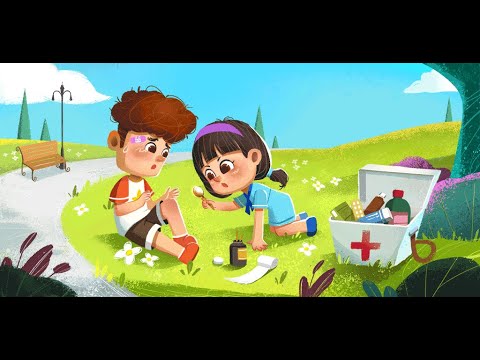

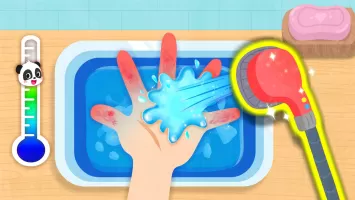
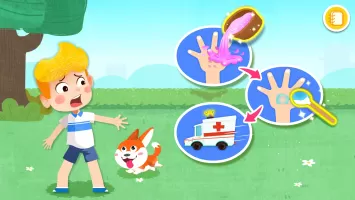
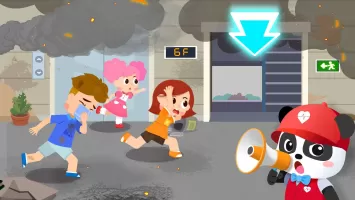
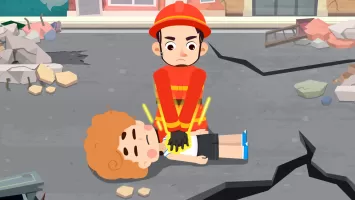
























very educative
voice clear and easy to understand
the art is phenomenal
no language options
more content suggested